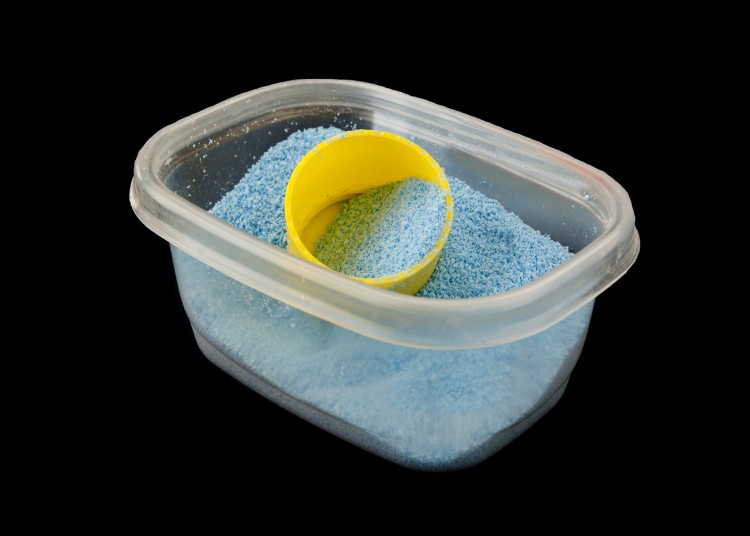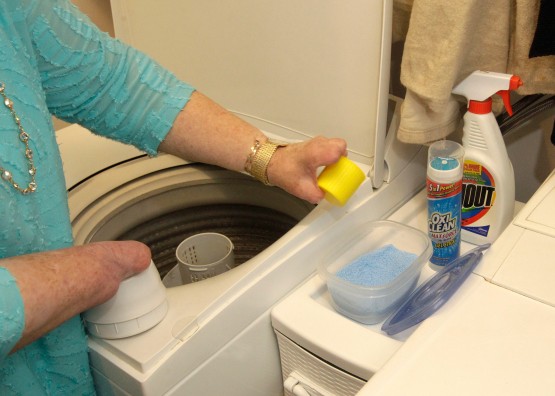Laundry Detergent System
Cindy created a waypoint for laundry powder, a plastic container that can hold the powder and cup. “I had to find a way to do it that was easier with less chance of vacuuming up powder.”
Description
Cindy found it was difficult to do her laundry for a number of reasons, but the application of the soap was the first stumbling block. “I can’t do it the way I used to. I can’t hold the container, take the lid off, pour the powder into the cup without knocking the cup over and making a big mess. I tried to hold the detergent bottle under my arm, trap the cup between my body and the washer, use my body without causing the cup to slip. It didn’t work. The potential for horrible was big. I had to find a way to do it that was easier with less chance of vacuuming up powder.”
That’s when she thought of the operation in a different way and created a waypoint for the powder, a plastic container that can hold the powder and cup. There was some trial-and-error until she found the right container that had a tab sticking off the cover that she could lift and pry with her residual fingers.
We include this example of a systems workaround among Cindy’s other objects to illustrate a key lesson: that an altered body requires re-thinking movements, sequences, functions at all points. Cindy’s process of adaptation has included some new adaptive objects, but it has also included modified processes that require a hyper-awareness of her body’s changed capacities.



